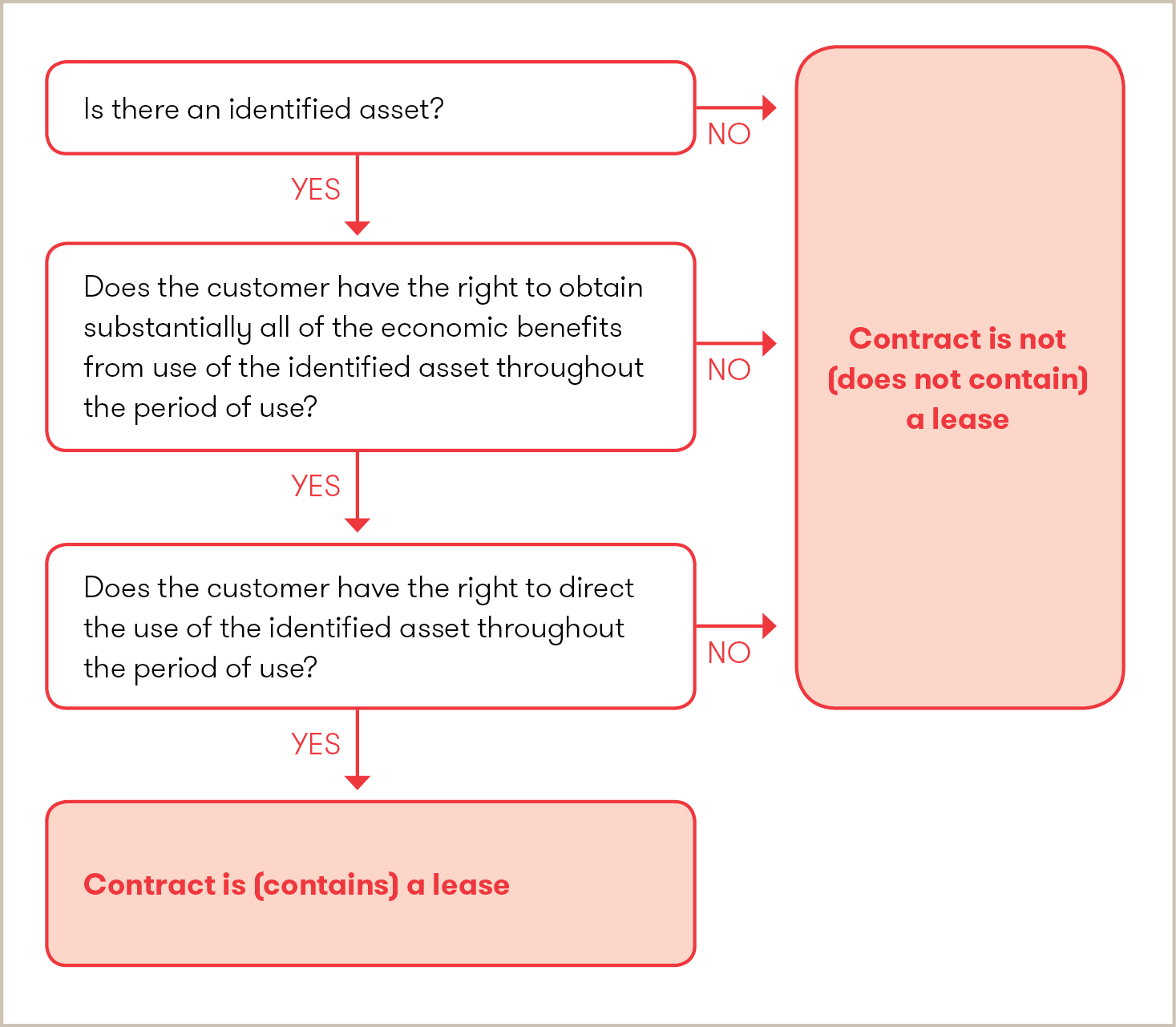-
Financial reporting and accounting advisory services
You trust your external auditor to deliver not only a high-quality, independent audit of your financial statements but to provide a range of support, including assessing material risks, evaluating internal controls and raising awareness around new and amended accounting standards.
-
Accounting Standards for Private Enterprises
Get the clear financial picture you need with the accounting standards team at Doane Grant Thornton LLP. Our experts have extensive experience with private enterprises of all sizes in all industries, an in-depth knowledge of today’s accounting standards, and are directly involved in the standard-setting process.
-
International Financial Reporting Standards
Whether you are already using IFRS or considering a transition to this global framework, Doane Grant Thornton LLP’s accounting standards team is here to help.
-
Accounting Standards for Not-for-Profit Organizations
From small, community organizations to large, national charities, you can count on Doane Grant Thornton LLP’s accounting standards team for in-depth knowledge and trusted advice.
-
Public Sector Accounting Standards
Working for a public-sector organization comes with a unique set of requirements for accounting and financial reporting. Doane Grant Thornton LLP’s accounting standards team has the practical, public-sector experience and in-depth knowledge you need.
-
Tax planning and compliance
Whether you are a private or public organization, your goal is to manage the critical aspects of tax compliance, and achieve the most effective results. At Doane Grant Thornton, we focus on delivering relevant advice, and providing an integrated planning approach to help you fulfill compliance obligations.
-
Research and development and government incentives
Are you developing innovative processes or products, undertaking experimentation or solving technological problems? If so, you may qualify to claim SR&ED tax credits. This Canadian federal government initiative is designed to encourage and support innovation in Canada. Our R&D professionals are a highly-trained, diverse team of practitioners that are engineers, scientists and specialized accountants.
-
Indirect tax
Keeping track of changes and developments in GST/HST, Quebec sales tax and other provincial sales taxes across Canada, can be a full-time job. The consequences for failing to adequately manage your organization’s sales tax obligations can be significant - from assessments, to forgone recoveries and cash flow implications, to customer or reputational risk.
-
US corporate tax
The United States has a very complex and regulated tax environment, that may undergo significant changes. Cross-border tax issues could become even more challenging for Canadian businesses looking for growth and prosperity in the biggest economy in the world.
-
Cross-border personal tax
In an increasingly flexible world, moving across the border may be more viable for Canadians and Americans; however, relocating may also have complex tax implications.
-
International tax
While there is great opportunity for businesses looking to expand globally, organizations are under increasing tax scrutiny. Regardless of your company’s size and level of international involvement—whether you’re working abroad, investing, buying and selling, borrowing or manufacturing—doing business beyond Canada’s borders comes with its fair share of tax risks.
-
Succession & estate planning
Like many private business owners today, you’ve spent your career building and running your business successfully. Now you’re faced with deciding on a successor—a successor who may or may not want your direct involvement and share your vision.
-
Tax Reporting & Advisory
The financial and tax reporting obligations of public markets and global tax authorities take significant resources and investment to manage. This requires calculating global tax provision estimates under US GAAP, IFRS, and other frameworks, and reconciling this reporting with tax compliance obligations.
-
Transfer pricing
Recognized as a leader in the transfer pricing community, our award-winning team can help you expand your business beyond borders with confidence.

-
Transactions
Our transactions group takes a client-centric, integrated approach, focused on helping you make and implement the best financial strategies. We offer meaningful, actionable and holistic advice to allow you to create value, manage risks and seize opportunities. It’s what we do best: help great organizations like yours grow and thrive.
-
Restructuring
We bring a wide range of services to both individuals and businesses – including shareholders, executives, directors, lenders, creditors and other advisors who are dealing with a corporation experiencing financial challenges.
-
Forensics
Market-driven expertise in investigation, dispute resolution and digital forensics
-
Cybersecurity
Viruses. Phishing. Malware infections. Malpractice by employees. Espionage. Data ransom and theft. Fraud. Cybercrime is now a leading risk to all businesses.
-
Consulting
Running a business is challenging and you need advice you can rely on at anytime you need it. Our team dives deep into your issues, looking holistically at your organization to understand your people, processes, and systems needs at the root of your pain points. The intersection of these three things is critical to develop the solutions you need today.
-
Creditor updates
Updates for creditors, limited partners, investors and shareholders.

-
Governance, risk and compliance
Effective, risk management—including governance and regulatory compliance—can lead to tangible, long-term business improvements. And be a source of significant competitive advantage.
-
Internal audit
Organizations thrive when they are constantly innovating, improving or creating new services and products and envisioning new markets and growth opportunities.
-
Certification – SOX
The corporate governance landscape is challenging at the best of times for public companies and their subsidiaries in Canada, the United States and around the world.
-
Third party assurance
Naturally, clients and stakeholders want reassurance that there are appropriate controls and safeguards over the data and processes being used to service their business. It’s critical.
-
 Assurance Important changes coming to AgriInvest in 2025AgriInvest is a business risk management program that helps agricultural producers manage small income declines and improve market income.
Assurance Important changes coming to AgriInvest in 2025AgriInvest is a business risk management program that helps agricultural producers manage small income declines and improve market income. -
 Tax alert Agricultural Clean Technology ProgramThe Agricultural Clean Technology Program will provide financial assistance to farmers and agri-businesses to help them reduce greenhouse gas (GHG) emissions.
Tax alert Agricultural Clean Technology ProgramThe Agricultural Clean Technology Program will provide financial assistance to farmers and agri-businesses to help them reduce greenhouse gas (GHG) emissions. -
 Tax alert ACT Program – Research and Innovation Stream explainedThe ACT Research and Innovation Stream provides financial support to organizations engaged in pre-market innovation.
Tax alert ACT Program – Research and Innovation Stream explainedThe ACT Research and Innovation Stream provides financial support to organizations engaged in pre-market innovation. -
 Tax alert ACT Program – Adoption Stream explainedThe ACT Adoption Stream provides non-repayable funding to help farmers and agri-business with the purchase and installation of clean technologies.
Tax alert ACT Program – Adoption Stream explainedThe ACT Adoption Stream provides non-repayable funding to help farmers and agri-business with the purchase and installation of clean technologies.
-
Builders And Developers
Every real estate project starts with a vision. We help builders and developers solidify that vision, transform it into reality, and create value.
-
Rental Property Owners And Occupiers
In today’s economic climate, it’s more important than ever to have a strong advisory partner on your side.
-
Real Estate Service Providers
Your company plays a key role in the success of landlords, investors and owners, but who is doing the same for you?

-
Mining
There’s no business quite like mining. It’s volatile, risky and complex – but the potential pay-off is huge. You’re not afraid of a challenge: the key is finding the right balance between risk and reward. Whether you’re a junior prospector, a senior producer, or somewhere in between, we’ll work with you to explore, discover and extract value at every stage of the mining process.
-
Oil & gas
The oil and gas industry is facing many complex challenges, beyond the price of oil. These include environmental issues, access to markets, growing competition from alternative energy sources and international markets, and a rapidly changing regulatory landscape, to name but a few.
The evaluation of whether a contract is (or contains) a lease is even more important under IFRS 16 than it was under IAS 17 and IFRIC 4 because substantially all leases will be recorded on-balance sheet. In practice, the main impact will be on contracts that are not in the legal form of a lease but involve the use of a specific asset and therefore might contain a lease (e.g., outsourcing, contract manufacturing, transportation and power supply agreements). Some contracts that do not contain a lease today will have embedded arrangements that meet the definition of a lease under IFRS 16, and vice versa.
Background
Under IFRS 16 a lease is defined as “a contract, or part of a contract, that conveys the right to use an asset (the underlying asset) for a period of time in exchange for consideration.”
A contract can be (or contain) a lease only if the underlying asset is “identified”. Having the right to use the identified asset requires the lessee having the right to
- obtain all the economic benefits from use of the identified asset; and
- direct the use of the identified asset.
Applying the new definition involves three key evaluations (which are explained in further detail below):

-
1. Identified asset
The first question that an entity must answer when determining whether a contract is or contains a lease is whether there is an identified asset. An identified asset is defined as an asset that is either:
- explicitly identified in the contract or;
- implicitly specified by being identified at the time that the asset is made available for use by the customer.
Even if an asset is explicitly specified, if the supplier has a substantive substitution right throughout the period of use, then the customer does not have the right to use an identified asset. A substantive substitution right exists if the supplier has the practical ability to substitute alternative assets throughout the period of use and would benefit economically from doing so. The assessment of whether a supplier’s substantive substitution right exists is based on facts and circumstances at inception of the contract.
A customer is not required to perform an exhaustive search to determine if a supplier has a substantive substitution right. If the customer cannot readily determine whether a supplier has a substantive substitution right, the customer may conclude that a substantive substitution right does not exist.
Example – Rail cars
Supplier has a five-year contract with Customer to transport goods using a specified type of rail car. The transport timetable and quantity of goods to be shipped specified in the contract is equivalent to Customer having the use of 10 rail cars for five years. Supplier provides the rail cars, conductor and engine as part of the contract. Supplier has a large pool of similar rail cars that can be used to fulfill the requirements of the contract with Customer. The rail cars and engines are stored at Supplier’s premises when not being used to transport the goods.
Analysis – The contract does not contain a lease. The rail cars and the engine used to transport Customer’s goods are not identified assets because Supplier has a substantive substitution right to substitute the rail cars and engine (alternative cars and engines are readily available to Supplier and can be substituted without Customer’s approval. In addition, costs associated with substituting the cars and engines is minimal because Supplier has a large pool of similar rail cars and engines stored at their premises).
A portion of an asset is an identified asset if it is physically distinct (e.g., a floor of a building). Where a portion of an asset is not physically distinct (e.g., a fibre optic cable), the capacity portion of the asset is not an identified asset unless the capacity portion represents substantially all of the capacity of the asset.
2. Economic benefits from use of the identified asset
The second question that an entity must answer when determining whether a contract is or contains a lease is whether it has the right to obtain substantially all the economic benefits from use of the identified asset throughout the period of use. A customer can obtain the economic benefits of the asset by using, holding or sub-leasing the asset.
When evaluating whether a customer obtains substantially all the economic benefits from use of an asset, a customer considers its rights within the defined scope of the contract. For example, if a contract specifies that a customer can drive a motor vehicle only up to a particular number of kilometers during the period of use, the customer considers only the economic benefits from use of the motor vehicle for the permitted mileage and not beyond.
3. Right to direct the use of the identified asset
Last, an entity needs to determine if it has the right to direct the use of the identified asset throughout the period of use. To have the right to direct the use of an identified asset, a customer must have the right to direct how and for what purpose the asset is used (i.e., “how and for what purpose decisions”) throughout the period of use. In making this evaluation, a customer considers decisions that are most relevant (i.e., the decisions that affect the economic benefits derived from use of the asset).
Examples of how and for what purpose decisions:
- rights to change the type of output produced by the asset(s)
- rights to change when the output is produced
- rights to change where the output is produced
- rights to change whether the output is produced and the quantity of the output
Rights to operate an asset or maintain an asset do not give a customer the right to direct how and for what purpose the asset is used unless the how and for what purpose decisions are predetermined. In that case, the customer will control the asset if the customer has the right to operate the asset throughout the period of use or the customer designed the asset in a way that predetermines how and for what purpose the asset will be used throughout the period of use.
Example – Ship
Customer enters into a contract with a shipping company (Supplier) to transport cars from Rotterdam to Sydney. The contract specifies a particular ship and the cars to be transported, which will require the full capacity of the ship. Supplier operates and maintains the ship and is responsible for the safe passage of the cars. Customer is not able to make changes (e.g. to the destination or nature of the cargo) once the contract has been signed.
Analysis – The contract does not contain a lease. After signing the contract, Customer is not able to direct how and for what purpose the ship is used and does not, therefore, control the use of the asset. The contract pre-determines how and for what purpose the ship will be used and Customer neither operates nor designed the ship.
Determining whether a contract meets the definition of a lease can be difficult; however, your Grant Thornton advisors are here to help. We’ll work with you to analyze your arrangements and classify them under the new IFRS 16.

